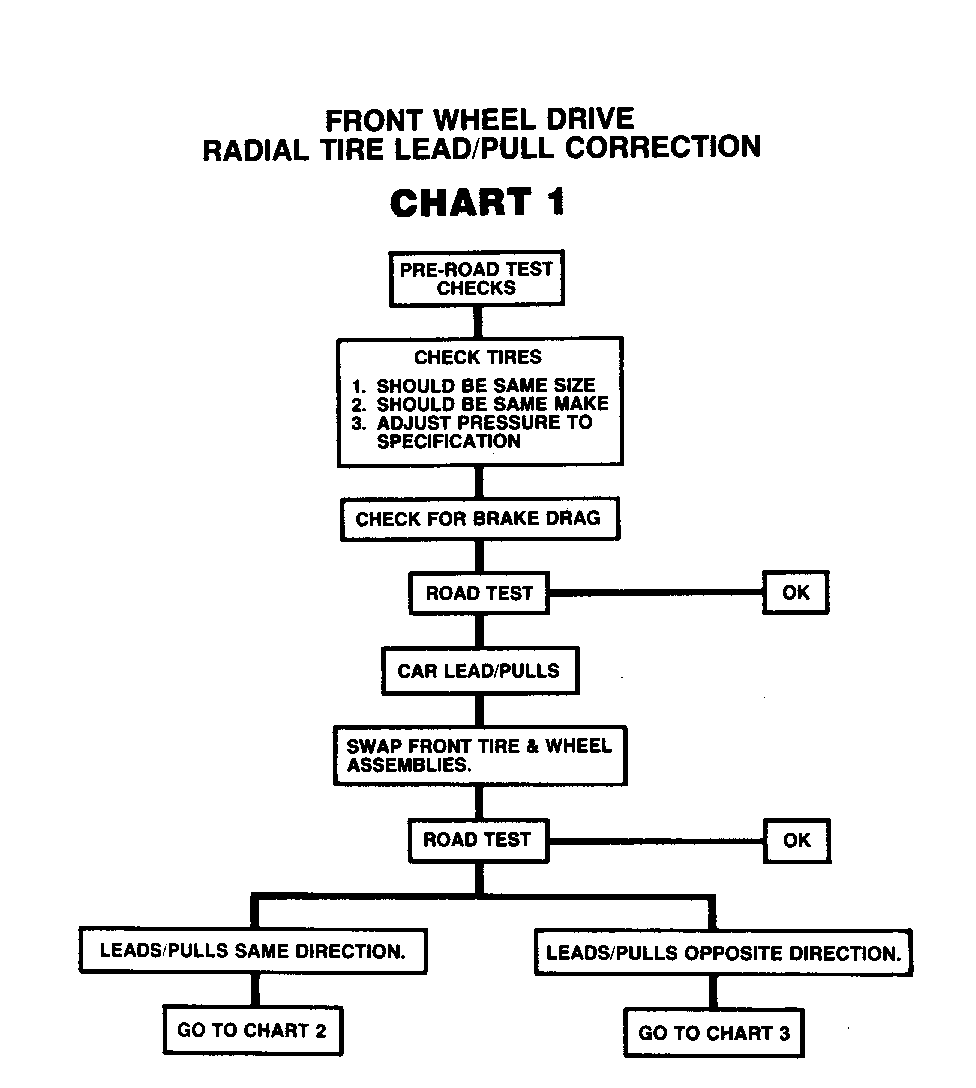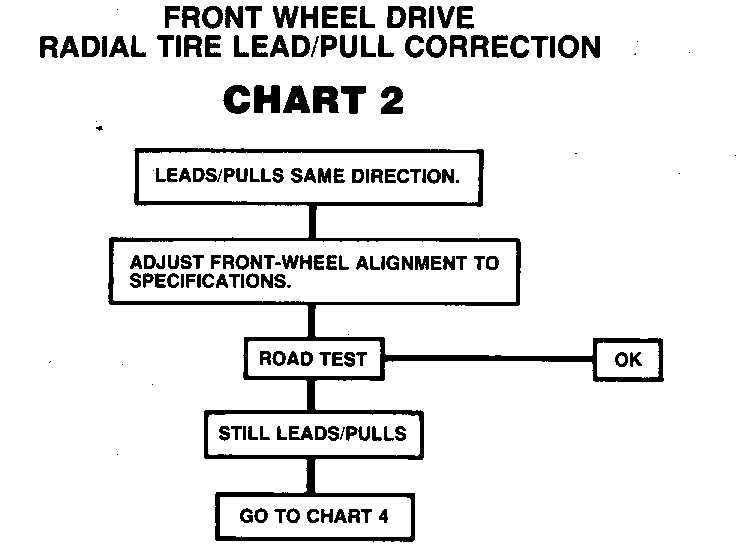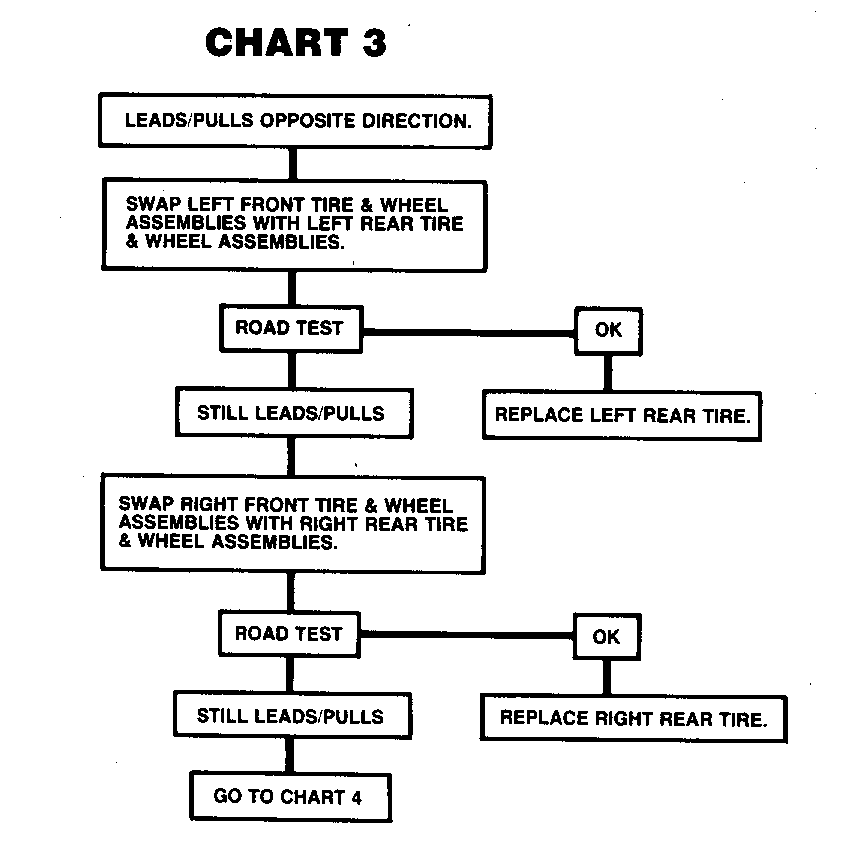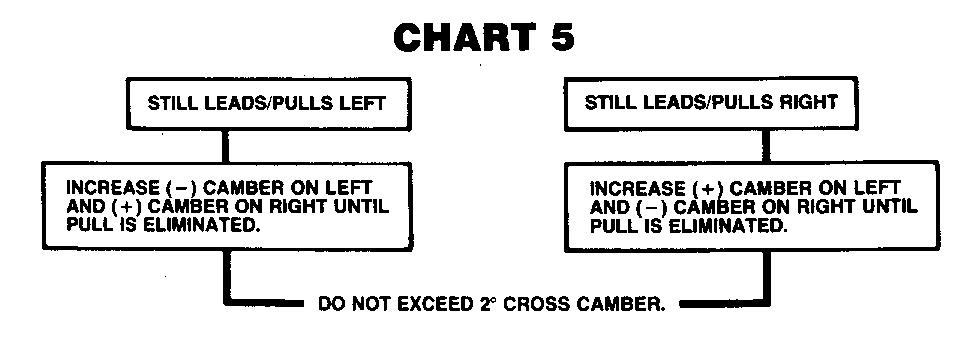STEERING LEAD OR PULL DIAGNOSIS AND POSSIBLE REPAIR

STEERING LEAD/PULL
VEHICLES AFFECTED: FRONT WHEEL DRIVE VEHICLES -----------------
Some vehicles may exhibit a slight lead/pull right or left while driving straight. This bulletin provides a procedure for identifying lead/pull causes, and suggests possible solutions.
Definitions:
-----------
Lead: On a smooth flat road, with transmission in neutral, the vehicle does not require torque input to the steering wheel to maintain a straight direction; however, with hands off the steering wheel the vehicle steers left or right.
Pull: On a smooth flat road, with the transmission in neutral, the vehicle requires some torque input to the steering wheel to maintain a straight direction.
A road test will be necessary to determine if a lead/pull steer condition exists. Prior to road testing the vehicle check and/or repair the following:
1. Tires should be the same size and make. 2. Adjust tire pressure to specification. 3. Check for brake drag.
Drive the vehicle on a straight, smooth, flat (crown free) road at 40 mph. Shift the transmission to neutral and allow the vehicle to coast. Momentarily remove hands from the steering wheel and note if there is a change in the direction the vehicle is traveling. A deviation from a straight direction indicates a lead/pull condition. If a lead/pull condition exists, follow the directions outlined on the attached "Radial Tire Lead/Pull Correction Charts".
If tires are found to be the cause of a lead or pull as a result of a manufacturing defect, this is covered by the tire company's warranty. Tire dealers will provide free replacement for 12 months or 25 percent tread wear including mounting and balancing.Beyond 12 months and/or 25 percent tread wear, tire dealers will prorate tires based upon remaining tread.





General Motors bulletins are intended for use by professional technicians, not a "do-it-yourselfer". They are written to inform those technicians of conditions that may occur on some vehicles, or to provide information that could assist in the proper service of a vehicle. Properly trained technicians have the equipment, tools, safety instructions and know-how to do a job properly and safely. If a condition is described, do not assume that the bulletin applies to your vehicle, or that your vehicle will have that condition. See a General Motors dealer servicing your brand of General Motors vehicle for information on whether your vehicle may benefit from the information.
